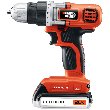Should You Paint Over Wallpaper?
Written by Lee Wyatt (last updated May 8, 2019)
When trying to give an old room new life there is often one question that a homeowner can almost certainly find themselves faced with. That question is "Should you paint over wallpaper?" Since it is mainly a question of personal preferences, there really is no right or wrong answer to this question. However, since the answer can have some rather long lasting effects, here are a few guidelines that you can use to ensure you come up with a solution that you can live with.
When to Remove It
- Removing it can be good. Simply put, removing wall paper can allow you to have results that are generally better than those you receive when painting over wallpaper. One of the biggest reasons for this is that wallpaper is generally applied in layers that slightly overlap one another. When painted, these seams have a tendency to show up with amazing clarity. In addition many wallpapers are textured in some way, and when painted these also show up dramatically.
- What are your future plans? Think about the future as well. Often when painting over wallpaper, you make it really difficult to remove at a future time. This means that you will have more work if you ever do decide to remove it later on.
- Ripped or damaged? If you have noticed that the wallpaper is ripped, damaged, or loose in any way, then it is always better to remove it than painting over it. The reason for this is simple in that if the wallpaper does come down at a later time, after you have painted over it, you will also lose the paint. Basically you are going to be throwing away money on a project that you can be certain of not lasting for very long.
- Paint can sometimes loosen paper. It's also a sad fact that there are times when paint can actually end up loosening the adhesive found on wallpaper. If this happens, you can easily find yourself with a wall that has peeling painted wallpaper on it.
When to Paint Over It
- It's quicker. Generally speaking, painting over wallpaper takes a whole lot less time than removing it. Usually all you will need to do is slap a little bit of primer on, and then paint the walls. After all, it is a lot quicker than removing the wallpaper (which at best is a difficult and time consuming project), repairing any damage you find, and then painting the wall.
- Less work. There is always some kind of surprise found when removing wallpaper from a wall. Unfortunately, these surprises usually entail more work for you, typically in the form of repairing some kind of damage to the wall, or finding more and more layers of wallpaper that need to be removed.
- Simpler preparation. As long as you don't have textured wallpaper your preparation times are actually cut down quite a bit. Add a little bit of caulking around the edges of the walls, joint seems, and then paint your primer. Once that is done you are ready to go.
- It's less likely to damage walls. There are times when removing wallpaper can actually damage the plaster walls that are found underneath. By leaving the wall paper up, you are less likely to damage the walls and creating more work for you to do later on.
Author Bio
Lee Wyatt
Contributor of numerous Tips.Net articles, Lee Wyatt is quickly becoming a regular "Jack of all trades." He is currently an independent contractor specializing in writing and editing. Contact him today for all of your writing and editing needs! Click here to contact. Learn more about Lee...
Preventing Garbage Disposal Odors
It is always better to prevent something bad from happening then wasting time and money on fixing something, that could ...
Discover More
What are Architectural Plants?
If you have ever wandered through a nursery, you have probably come across something called architectural plants. But ...
Discover More
Cleaning Stored Tile
Have you ever noticed that there are times when even the things that we are storing for later use get dirty? This happens ...
Discover More
More Home Improvement Tips
Should I Paint the Ceiling?
Have you ever asked yourself whether you should I paint the ceiling? While the answer is fairly simple, it isn't really ...
Discover More
Painting New Drywall
Whether you are want to paint some renovation work or are trying to finish up some repairs, painting new drywall is an ...
Discover More
How to Choose Quality Brushes
As with most things, if you use low quality paintbrushes then you will end up with a substandard finished product. By ...
Discover More

Comments